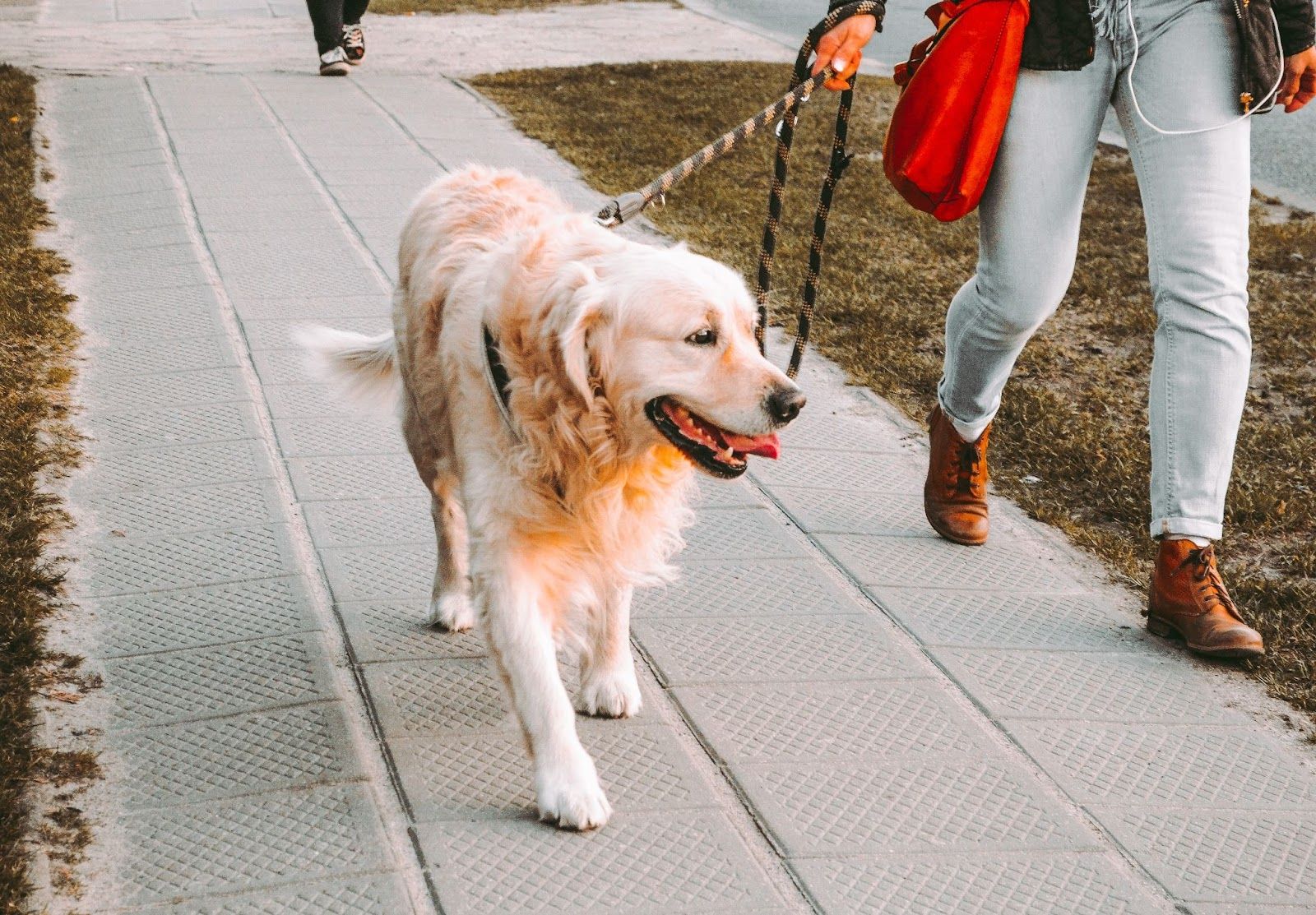Does your pup suffer from a luxating patella? Maybe you’re not too sure what that is. Or you’re looking for answers about how to fix or treat it. Read below to find out how to help your pup!

What is a Luxating Patella?
Did your vet tell you that your pup has a luxating patella? Or did you stumbled across this term online, and you’re wondering if this is a condition that your poor pup has. But what does this term mean?
Well, the patella is the kneecap, and it’s normally located in a groove at the bottom of the thigh bone—a.k.a. the femur. “[And] the term luxating means 'out of place' or 'dislocated'. Therefore, a luxating patella is a kneecap that moves out of its normal location.”
Your dog may have this condition if you’ve ever noticed them skip a step when you’re on a walk. Or if they all of a sudden switch to walking on only three legs, and then back to four again. It’s because their kneecap momentarily popped out of place.
The VCA Hospital tells us that the kneecap sits under a ligament called the patellar ligament. And this ligament attaches the large thigh muscles to a point on the center of the front of the shin. And when the leg bends or straightens, the kneecap is supposed to slide up and down in its groove, keeping the patellar ligament in its place. So when the kneecap pops out of place, it can cause a lot of issues with mobility and pain for your dog.
Which Dogs are More Prone to a Luxating Patella?
Small dog breeds and “toy” breeds actually have a genetic predisposition to getting a luxating patella. So if you have a smaller breed like a Chihuahua, Maltese, Bichon Frise, Pomeranian, or Miniature Poodle, they will be more likely to suffer from this condition.

Can a Dog Live With a Luxating Patella?
This issue can range from very mild, to moderate, to severe. Luxating patellas are graded from Grade 1-4 depending on the severity. And some dogs can tolerate it for many years or even their entire life.
But be aware that other dogs will have very serious problems from this, and need medical treatment. So please contact your veterinarian for advice and treatment options if you suspect that your dog suffers from a luxating patella. You wouldn’t want your sweet pup to suffer in severe pain for any longer than they need to.
How Do You Treat a Dog With a Luxating Patella?
Typically, a luxating patella is seen in a dog’s hind legs. About half of dogs affected only have problems in one leg, and the other half of those dogs will experience issues with both hind legs.
Your veterinarian will need to examine your dog to conclude how severe their specific condition is, and what the proper treatment would be. “Treatment options can include surgery (followed by physical rehabilitation) or conservative care that consists of pharmacologic and supplemental intervention, lifestyle changes, and physical rehabilitation.”

Can Dogs Recover From a Luxating Patella?
Dogs won’t just recover from a luxating patella on their own. And it’s not something that will just go away. If your dog has the lowest grade level of severity, your vet may just recommend supplements and pain meds, as well as certain changes in their physical activity. Or even special physical therapy exercises to help.
But if it’s more severe and your dog needs surgery, that’s not something that can be avoided. But no worries—your dog will recover from the surgery. And if your pup gets surgery before any arthritis sets in, or before any other injuries happen… They will recover to good as new!
Just keep in mind that recovery from surgery will take about 12 weeks. And this will include very specific instructions from your vet about resting, medications, supplements, and certain physical rehabilitation.
Can Dogs Walk With a Luxating Patella?
Yes-ish. If your dog has a more mild case of a luxating patella, they can go for slow, gentle walks. But again, it’s always best to consult with your veterinarian right away because every dog is unique and every case is different.

What Happens If You Don't Fix a Luxating Patella?
This all depends on the “grade” of your dog’s severity. If their luxating patella is only a Grade 1 or 2, they might not need surgery, and you can just use medicine, supplements, and special exercises.
But if they are at a Grade 3 or 4—meaning that their patella is out of place more often than it’s in place—then your vet will probably recommend surgery. And if you don’t get surgery for them, it will continue to get worse and lead to severe arthritis in their knee.
If your dog is skipping when they walk, “it means that there has been some movement of the patella into a position which locks the knee from opening properly. This movement which happens is causing rubbing against the underlying cartilage and joint.”
And if your dog is still young, getting the surgery now will give your pup a great chance of full recovery and a healthy, happy life. But if you don’t, it can lead to having a painful knee that gets worse with age.
How Can I Help My Dog With a Luxating Patella?
The best way you can help your dog is by having them examined by your veterinarian, and listening to their advice. If you’re not sure about it, you can have your dog checked out by 2 or 3 veterinarians to see if their diagnoses and advice all line up. And then follow their recommendation to help your dog live their best life possible.
For more helpful articles about pet-parenting tips, check out the Off Leash blog at TryFi.com.
Want to know more about TryFi.com? The Fi Dog Collar is a GPS tracking collar that not only keeps track of your dog’s location, activity levels, and sleep patterns, but it also alerts you if your dog escapes your backyard. This is the fastest way to find your dog after an escape. Try the Fi Dog Collar today!






